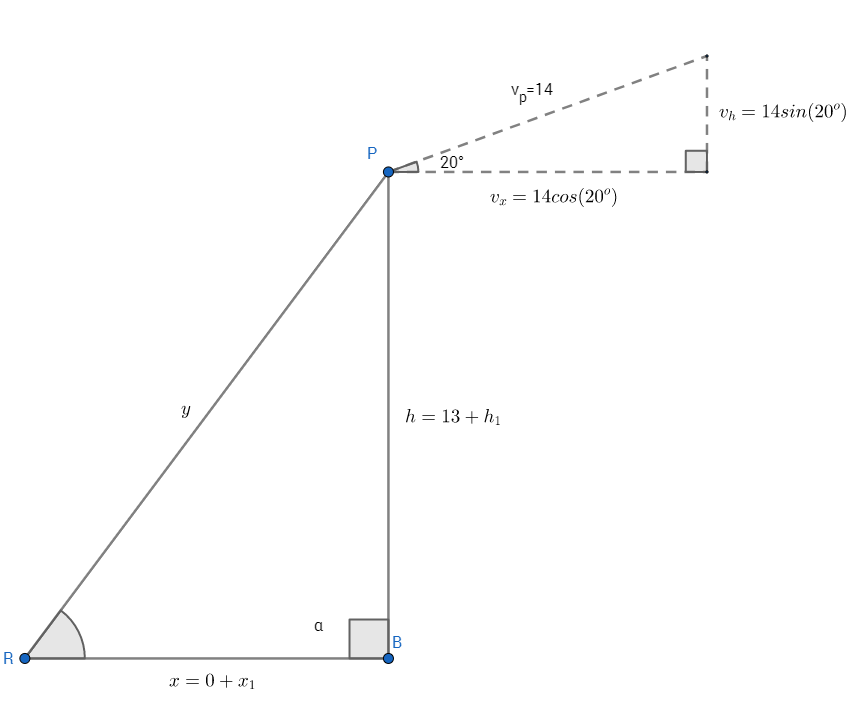A picture can help when working out related rate problems like this:

In the picture, point P represents the plane at the time that is 2 minutes after it flies directly over the ground radar station (labeled as point R in this diagram). I've drawn two right triangles at this moment. The dotted right triangle in the upper-right represents the velocities of the plane in the horizontal (#v_x#) and vertical (#v_h#) directions. These are determined using trigonometry and the fact that the plan is flying at a speed of 14 km/min at an angle of #20^o# (assumed from the horizontal). For example, using the definition of the sine function:
#sin 20^o = v_h/v_p => v_p * sin 20^o = v_h#
The larger triangle represents the connection between the radar station and the plane. Even though the plane is traveling at an angle upwards, if we were to take a snapshot of the plane at this exact instant you could draw such a right triangle, which will help us find the rate of change of the distance between the plane and the radar station (shown as #y# in the figure). I've labeled the base as #x#, the height as #h#, and the hypotenuse (distance to the plane) as #y#.
To find the rate of change of #y#, which is a derivative with respect to time #t#, or #dy/dt#, we need a formula that relates these values together. One common such formula in these kind of problems is the Pythagorean Formula: #x^2 + h^2 = y^2#. We take derivatives of all terms with respect to time #t#:
#2x*dx/dt + 2h*dh/dt = 2y*dy/dt#
#x*dx/dt + h*dh/dt = y*dy/dt#
We now need to substitute all values we can determine, and solve for the remaining we are seeking: #dy/dt#:
#{(x,"horizontal dist", 14cos(20^o) * 2, 26.311),
(dx/dt,"horizontal velocity", 14cos(20^o), 13.156),
(h,"vertical dist", 13+14sin(20^o) * 2, 22.577),
((dh)/dt,"vertical vel.", 14sin(20^o), 4.788),
(y,"plane dist", sqrt(x^2+h^2), 34.670),
(dy/dt,"plane dist. rate",?,?):}#
(Note: distances #x# and #h# are found by using the relationship that #"dist" = "rate" * "time"#)
Finally:
#x*dx/dt + h*dh/dt = y*dy/dt#
#(26.311)(13.156) + (22.557)(4.788) = (34.670)(dy/dt)#
#454.150 = 34.67dy/dt#
#dy/dt = 13.099 "km"//"min"#

